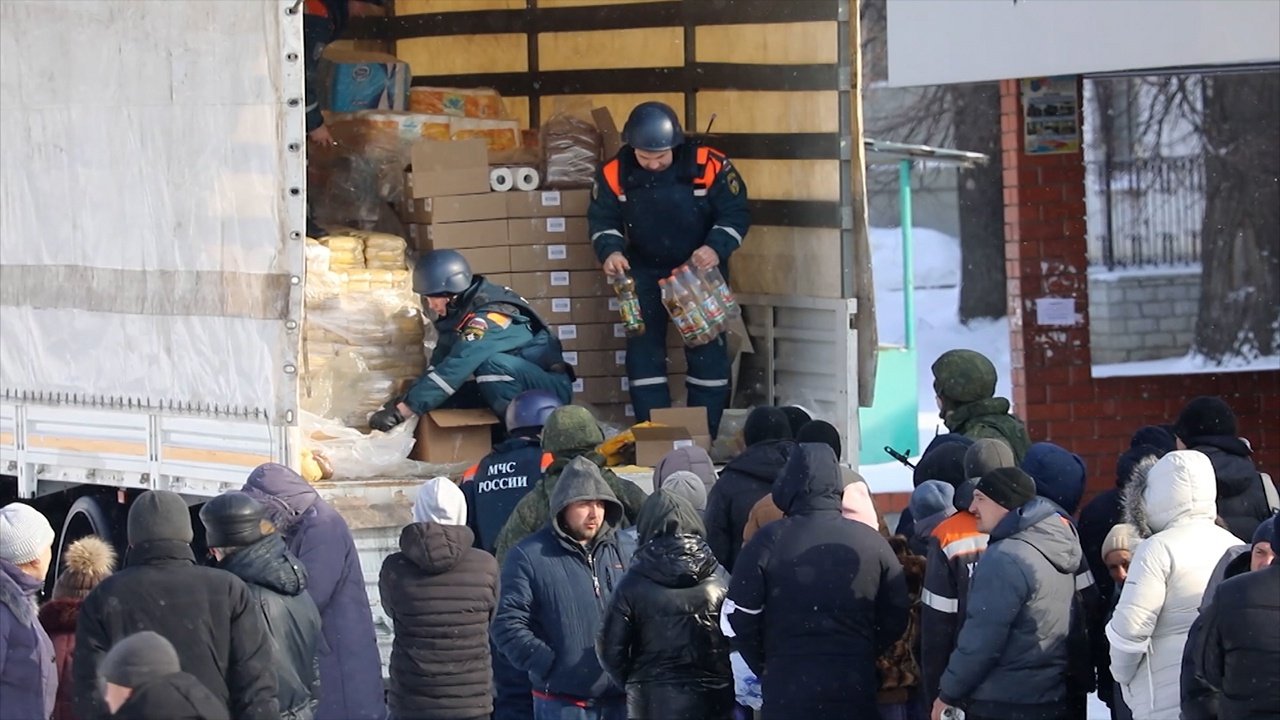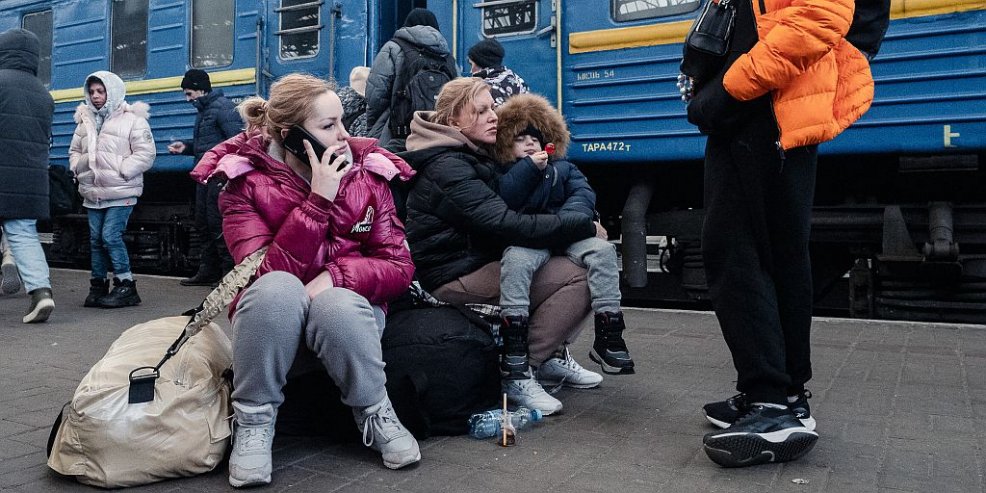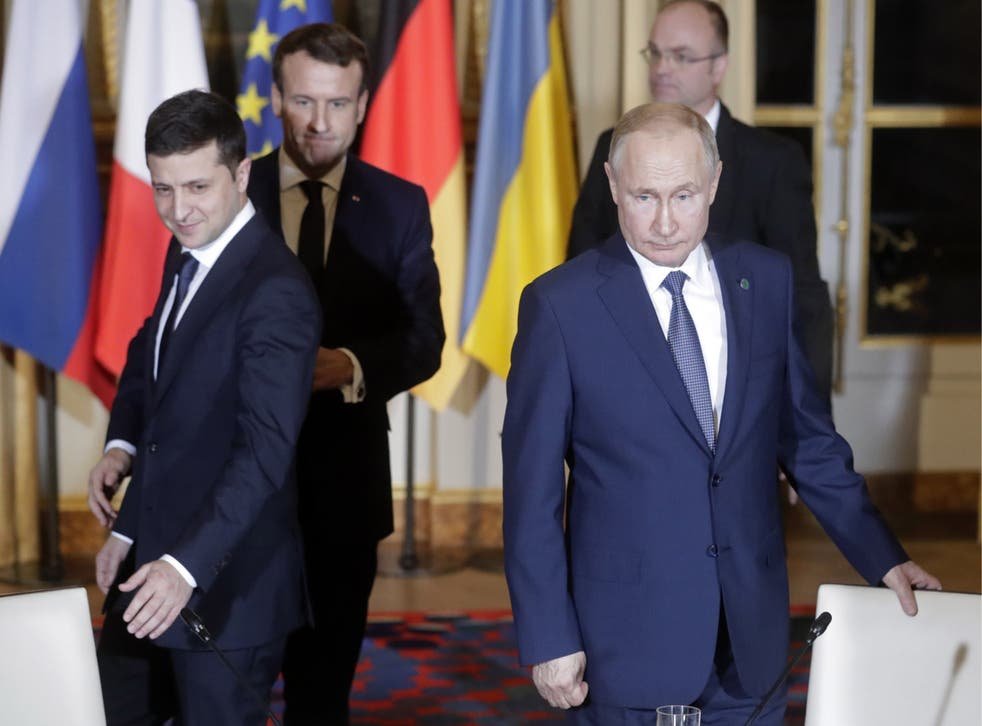Protests due to Gasoline Price Rise in Iran has claimed 63 lives. Protests are ongoing in 93 cities. 101 regime-sites are destroyed in Iran. Dozens of banks, government owned buildings & vehicles were burned by the people during Gasoline Price Rise Protests in Iran. Major unrest was seen in Tehran and Qom. Internet has been blocked in major portions of Iran.

Iran’s Interior Minister Abdolreza Rahmani Fazil has said security forces will act against those protesting a nationwide increase in gas prices if the “vandalism” continues.
Protests erupted in several cities across the country Friday following Thursday’s announcement by Iran’s National Oil Company (NIOPDC) of at least a 50% increase in gas prices.
In the province of Sirjan at least one person has been killed, the region’s government has said.
But journalists in Iran and international news agencies report the situation is much worse, citing clashes between protesters and riot police, damage to public property, and tires and garbage burning on the ground. Gunshots were also heard.
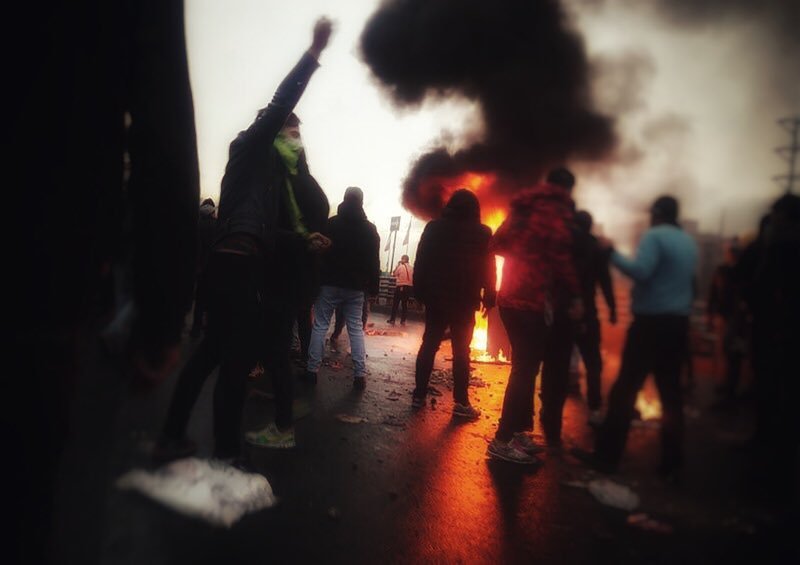
Rahmani Fazli has acknowledged people’s right to protest within the framework of the law but warned protesters against attempting to undermine the country’s security.
“Under any circumstances, the country’s security and the people’s calm are the top priority for the law enforcement and our security and military forces,” Rahmani Fazli is reported to have said.
Supreme Leader Ayatollah Ali Khamenei backs Gasoline price rise.
Iran’s Supreme Leader Ayatollah Seyyed Ali Khamenei said Sunday he supported the government’s decision to raise gas prices, but urged officials not to increase the price of other commodities.
In an address aired Sunday by state television, Ayatollah Ali Khamenei said “some lost their lives and some places were destroyed,” without elaborating. He called the protesters “thugs” who had been pushed into violence by counter revolutionaries and foreign enemies of Iran.
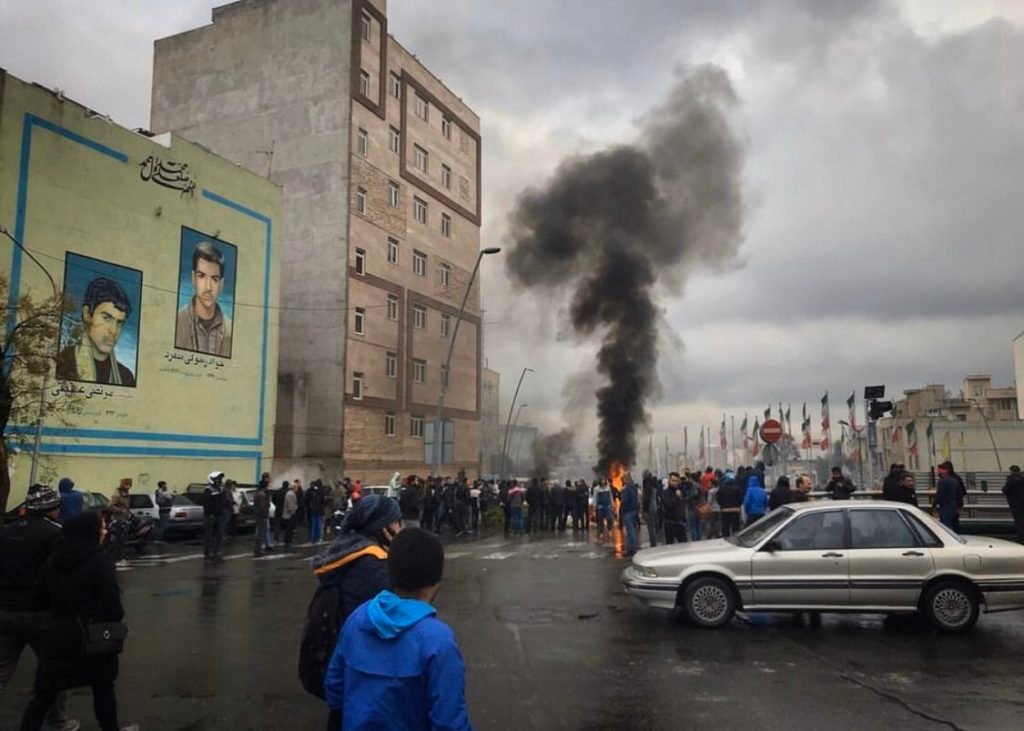
“If the heads of the three branches of the government make a decision [about it], I will support,” Khamenei is reported to have said. “The decision must be implemented.”
Khamenei specifically named those aligned with the family of Iran’s late shah, ousted 40 years ago, and an exile group called the Mujahedeen-e-Khalq. The MEK calls for the overthrow of Iran’s government and enjoys the support of President Donald Trump’s personal lawyer, Rudy Giuliani.
“Setting a bank on fire is not an act done by the people. This is what thugs do,” Khamenei said.
The supreme leader carefully backed the decision of Iran’s relatively moderate President Hassan Rouhani and others to raise gasoline prices. While Khamenei dictates the country’s nuclear policy amid tensions with the U.S. over its unraveling 2015 accord with world powers, he made a point to say he wasn’t an “expert” on the gasoline subsidies.
Khamenei ordered security forces “to implement their tasks” and for Iran’s citizens to keep clear of violent demonstrators. Iran’s Intelligence Ministry said the “key perpetrators of the past two days’ riot have been identified and proper action is ongoing.”

According to Reuters, state television reported that Khamenei blamed opponents and foreign enemies for “sabotage,” saying: “The counter-revolution and Iran’s enemies have always supported sabotage and breaches of security and continue to do so.”
The price of a gallon of regular gas jumped to 57,000 rials ($1.71) from 40,000 rials ($1.20) per gallon, while the monthly subsidized ration for each private car has been reduced from 70 gallons to 16 gallons, after which the price of gas rises to 114,000 rials ($3.42) per gallon.

Iran, which is a founding member of the Organization of the Petroleum Exporting Countries (OPEC), currently has estimated proven crude oil reserves of 155.6 billion barrels, according to energy giant BP.
Gasoline Price Rise to prevent Fuel smugglers from Exporting Iran’s Oil to neighboring Pakistan.
Earlier this month President Hassan Rouhani announced the discovery of a vast oil field containing an estimated 53 billion barrels of crude oil, which would make it Iran’s second-largest oil field.
The government says the increase is in the interest of the country and argues it will prevent “fuel smugglers” from exporting Iran’s oil to Pakistan.

Islamic Revolutionary Guards Corps (IRGC), published a video clip last year titled, “Organized smuggling of fuel/pipework on the seabed for smuggling fuel!” They also wrote about smuggling fuel with small boats: “In Hormozgan province, there are 50 launches [small boats] which smuggle 20,000 to 50,000 liters of fuel each, every day. That’s how millions of liters of the country’s resources are stolen every day.”
Fuel is subsidized in Iran and is sold way lower than free market prices. Profiteers with the right connections and assets can make a fortune by smuggling the cheap fuel to neighboring countries (Pakistan).
Also in late 2018, Abdollah Hendiani, deputy manager of the office of the fight against goods and currency smuggling in Iran, said during an interview with Iran’s state-run television, “Over the past three months, about one billion liters have been smuggled. This is about ten to 13 million liters of smuggled fuel every day.”

Smuggling this huge amount of fuel over the Iranian border per day requires a caravan of 500 fuel tankers with a capacity of 20,000 liters each. And every tanker needs to cross the border twice per day.
Reports show that about 50 to 60 percent of Karachi’s fuel is smuggled and foreign shipping companies and domestic fuel stations are the customer base of Iran’s smuggled gas. Since Fauji Foundation Group of Companies of Pakistan Army controls all the major Businesses and Pakistan Government controls the Karachi Port Trust (KPT), this smuggling was allowed with the connivance and supervision of Pakistan Army so that their affiliate companies could get Oil at cheaper costs and they make all the profits out of smuggling, while the tax payers money continue to be looted.
Iran’s chief of the committee for combating trafficking also said that smuggling fuel is an “organized crime” and “it may be connected to some Pakistani government institutions (without naming Pakistan Army or Fauji Foundation directly).”
The amount of trafficked fuel is so high that Pakistani officials are calling for action to prevent further damages to their economy. However they are afraid to openly take any action due to fear of reprisal by Pakistan Army top brass.

However, analysts and opposition figures say the main problem is a weak economy, with the country undergoing deep economic difficulties marked by rising inflation, growing unemployment, corruption and pressure from US sanctions.
Iran in contravention of the US sanctions, is selling the Tomatoes to Pakistan. Pakistan which is facing acute shortage of Tomatoes, is buying Tomatoes in large quantities from Iran in utter disregard of US Sanctions.
But the Irony is that the same Pakistan that had to complete the gas pipeline on its side has not yet started the work taking the excuse of US sanctions. We covered this in details in our previous article Pakistan To Face Multi-Billion-Dollar Penalty Over Stalled Iran Pakistan Gas Pipeline. Pakistan has taken the excuse for not starting the gas pipeline construction (which is complete on Iran side), that US would impose sanctions against Pakistan if Pakistan buys Oil from Iran. It should also be noted that Pakistan had been smuggling oil from Iran without paying the customs duty for decades. Several Twitter users posted videos of Oil Smuggling by Pakistan.
Another video of Oil Smuggling by Pakistan from Iran went viral on social media that showed hundreds of Oil Tanker Trucks crossing the Iranian Border to Pakistan.
As per the government sources, if this smuggling of Oil to Pakistan can be stopped, it will save a lot of Oil that can be diverted towards public use and it will bring down prices as well. Hence the government of Iran has taken this decision to make the border smuggling of Oil from Iran to Pakistan as less lucrative by the Gasoline price rise in Iran.
Internet Shutdown
Over the weekend, the hashtag #300% went viral, according to social media users and reporters in Iran. That was soon followed by a near-total internet shutdown. It’s unclear if these events are related.
Iran’s nationwide internet and cell phone shutdown passed the 24-hour mark, the longest such outage since at least 2013.
Researchers at Netblocks, a group that tracks global connectivity, first noticed major drops in connectivity in Tehran and other cities Friday afternoon. Iran has instituted partial or full internet blocks plenty of times in the past, but rarely at this scale.

The scale of the protests led the government to block the internet. The internet blockage observatory NetBlocks tweeted late on Saturday: “Iran is now in the midst of a near-total national internet shutdown; realtime network data show connectivity at 7% of ordinary levels after 12 hours of progressive network disconnections as public protests continue.”
Nearly two years ago, unrest over poor living standards led to some calling on Shi’ite Muslim clerical leaders to step down. Iranian officials said 22 people died in those protests.
The protests have put renewed pressure on Iran’s government as it struggles to overcome the U.S. sanctions that have strangled the economy since Trump unilaterally withdrew America from the nuclear deal over a year ago.
While representing a political risk for Rouhani ahead of February parliamentary elections, the demonstrations also show widespread anger among the Iranian people, who have seen their savings evaporate amid scarce jobs and the collapse of the national currency, the rial.
Cheap gasoline is practically considered a birthright in Iran, home to the world’s fourth-largest crude oil reserves despite decades of economic woes since its 1979 Islamic Revolution. Gasoline in the country remains among the cheapest in the world, with the new prices jumping 50% to a minimum of 15,000 rials per liter. That’s 13 cents a liter, or about 50 cents a gallon. A gallon of regular gasoline in the U.S. costs $2.60 by comparison.
The US secretary of state, Mike Pompeo, tweeted his support for the protests, saying “the US is with you”.
The Gasoline Price Rise is intended to raise about $2.5bn (£1.9bn) a year for additional subsidies for 18 million families, or about 60 million Iranians on lower incomes, the government said. The proposal had been recommended by the International Monetary Fund as a way of ending inefficient petrol subsidies and rebalancing government spending. Fuel subsidies cost 1.6% of GDP in 2017-18.
But voters, fed up with corruption, are skeptical that the extra revenue will see its way to society, especially the poor. But Mohammad Bagher Nobakht, the head of Iran’s plan and budget organisation, insisted about 60 million people out of the 82 million population would get an extra monthly bonus to compensate for the Gasoline price rise. He did not provide details but said the first payments would be made within the next week or 10 days.
Gasoline Price Rise Protests and Violence in Iran
The interior minister, Abdolreza Rahmani Fazli, told state TV: “Security forces have so far shown restraint and have tolerated the protests. But as the calm and security of people is our priority, they will fulfil their duty to restore calm if attacks on public and individuals’ properties continue.”
Violence broke out on Friday night in Sirjan, a city 800km (500 miles) south-east of Tehran. The state-run IRNA news agency said: “Protesters tried to set fire to the oil depot, but they were stopped by police.” It did not elaborate, but online videos circulating on Iranian social media purported to show a fire at the depot as sirens wailed in the background. Another showed a large crowd shouting: “Rouhani, shame on you. Leave the country alone.”
In Iran’s oil-rich Khuzestan province, online videos purported to show police firing teargas on crowds. There was also gunfire in the province’s city of Khorramshahr, which could be heard in a brief clip played on state television. The region has long been a political tinderbox, with an ethnic Arab population that feels disenfranchised from the country’s Persian-language majority.
White House Statement
The White House released a statement on Sunday supporting “the Iranian people in their peaceful protests against the regime that is supposed to lead them.”
“We condemn the lethal force and severe communications restrictions used against demonstrators. Tehran has fanatically pursued nuclear weapons and missile programs, and supported terrorism, turning a proud nation into another cautionary tale of what happens when a ruling class abandons its people and embarks on a crusade for personal power and riches,” the statement reads.
The price hike reflects an increase ranging from 50% to 300%.
Follow us at:-
Twitter Handle: @communique_news
Parler Handle: @newscommuniquecom
Subscribe our : YouTube Channel https://www.youtube.com/channel/UCnKJQ3gFsRVWpvdjnntQoAA
Like our Facebook Page https://m.facebook.com/News-Communiquecom-103788531007438/
1,254 total views






